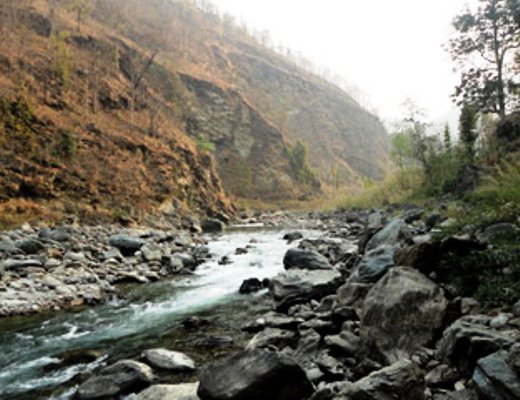
The World Bank Group today approved financing amounting to US$ 84.6 for the Kabeli-A Hydroelectric Project. The financing includes a US$ 40 million credit and a US$ 6 million grant from the International Development Association (IDA) and a US$ 19.3 million loan from the International Finance Corporation (IFC). Additionally, the package includes a US$ 19.3 million loan from the Canada Climate Change Program (CCCP) for which the IFC acts as the implementing agency.
Kabeli-A is a peaking run-of-river hydroelectric project with an installed capacity of 37.6 MW. It will be built in Panchthar district in the eastern hills of Nepal. The energy output will be connected to the national grid via the Kabeli Corridor Transmission Line, a separate project under construction with World Bank financing. Kabeli-A was among the projects shortlisted in the late 1990s on the basis of a screening and ranking exercise. Following an International Competitive Bidding process in 2007, the Government of Nepal offered the contract on Build, Own, Operate and Transfer (BOOT) terms to Kabeli Energy Ltd. Kabeli Energy Ltd. will invest US$ 23 million towards the US$ 108.6 million cost of the project.
“Reliable electricity is central to any modern economic infrastructure,” said Johannes Zutt, World Bank Country Director for Nepal. “No country has achieved middle-income status without ensuring access to reliable, sustainable and affordable modern energy. This World Bank-IFC project will demonstrate how public-private partnerships can help Nepal exploit its hydropower potential and eliminate electricity deficits while also developing hydroelectricity exports as an engine of the nation’s economic growth.”
According to a press release issued by the World Bank, the project has three components. Kabeli Energy Ltd. will implement the first component to build plant infrastructures including a diversion dam, a settling basin, a headrace tunnel, a semi-underground powerhouse, and a tailrace tunnel. The second component will support the Ministry of Energy in supervising implementation of the project in compliance with technical, environmental and social safeguards and to improve its capacity in overseeing hydropower development. The third component will support the Investment Board of Nepal in improving its ability to facilitate the development of large hydropower projects in line with applicable international technical, environmental, social and performance standards.
“The project design reflects the lessons learned from hydropower projects worldwide, including those in the Himalayas where similar conditions exist,” said Jie Tang, World Bank Lead Energy Specialist and Task Team Leader for the project. “The lessons suggest avoiding delays in project preparation and implementation, improving social and environmental management, enhancing sediment handling capacity, and improving the long term sustainability of the project.”
- TANAHU HYDROPOWER PROEJCT: A Significant Achievement
- Apr 15, 2024
- AMBASSADOR HANAN GODAR: Sharing Pain With A Nepali Family
- Mar 30, 2024
- VISIT OF KfW AND EIB TO NEPAL : Mission Matters
- Mar 25, 2024
- NEPAL BRITAIN SOCIETY: Pratima Pande's Leadership
- Mar 24, 2024
- NEPAL ARMY DAY: Time To Recall Glory
- Mar 15, 2024
















